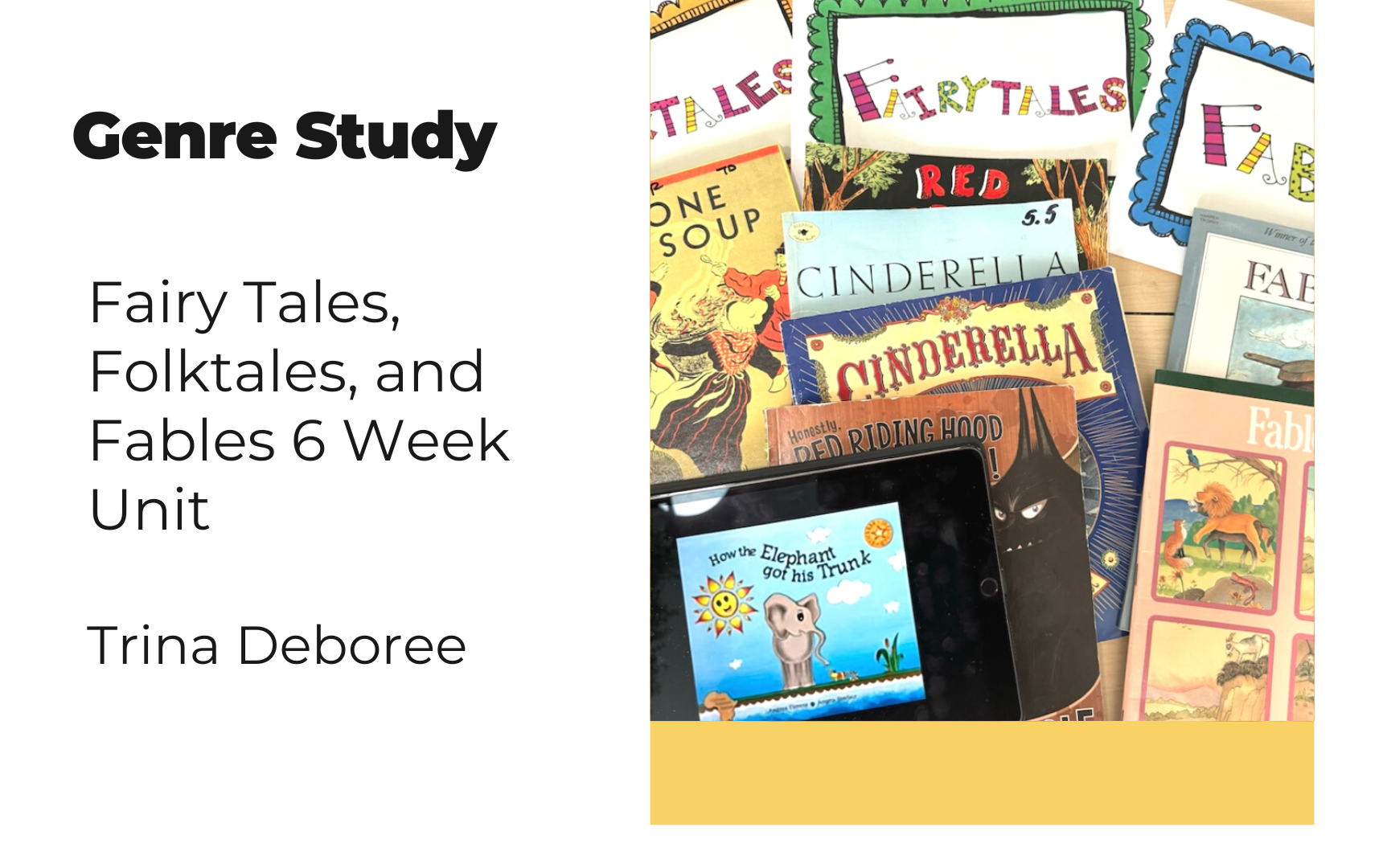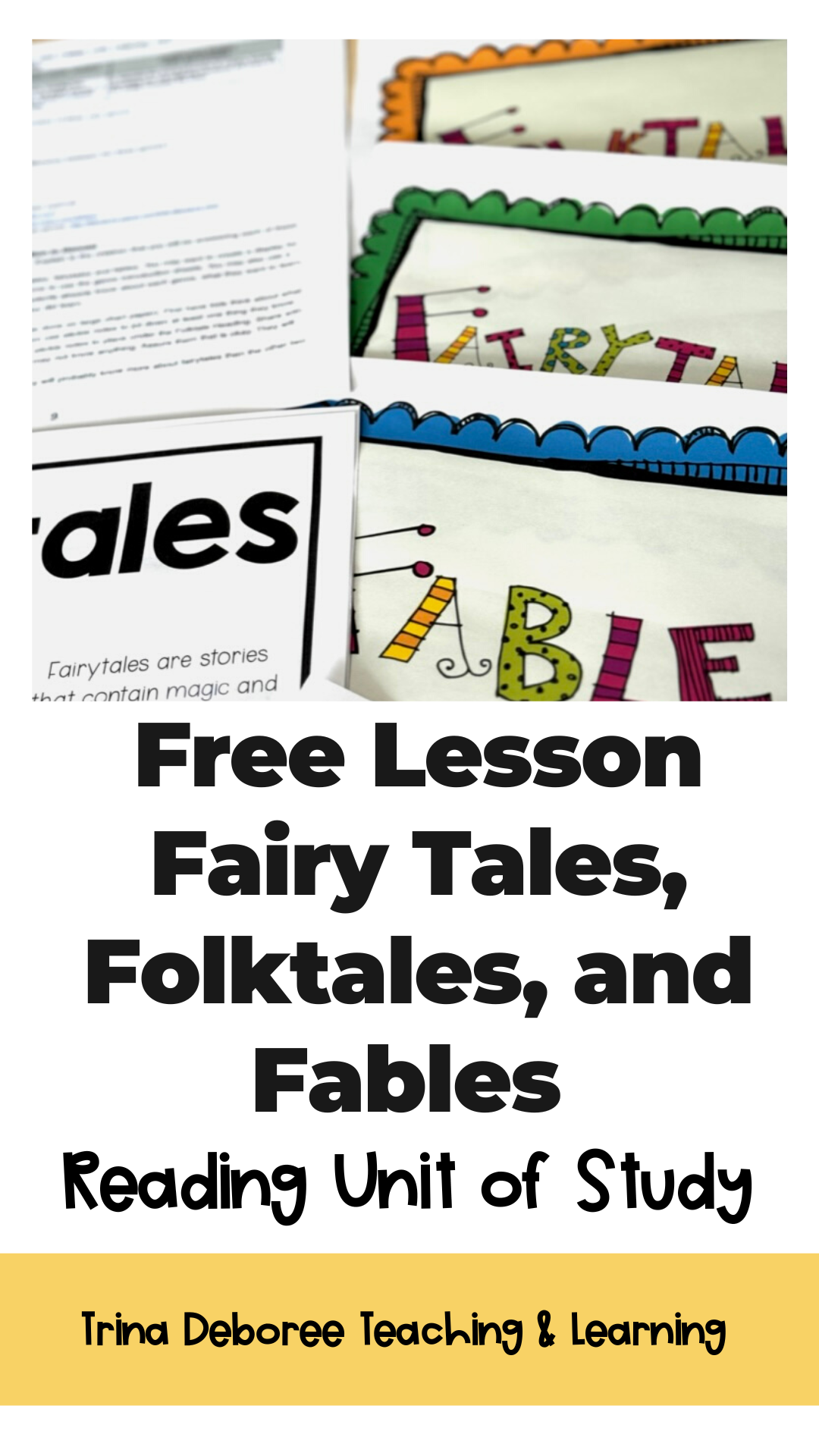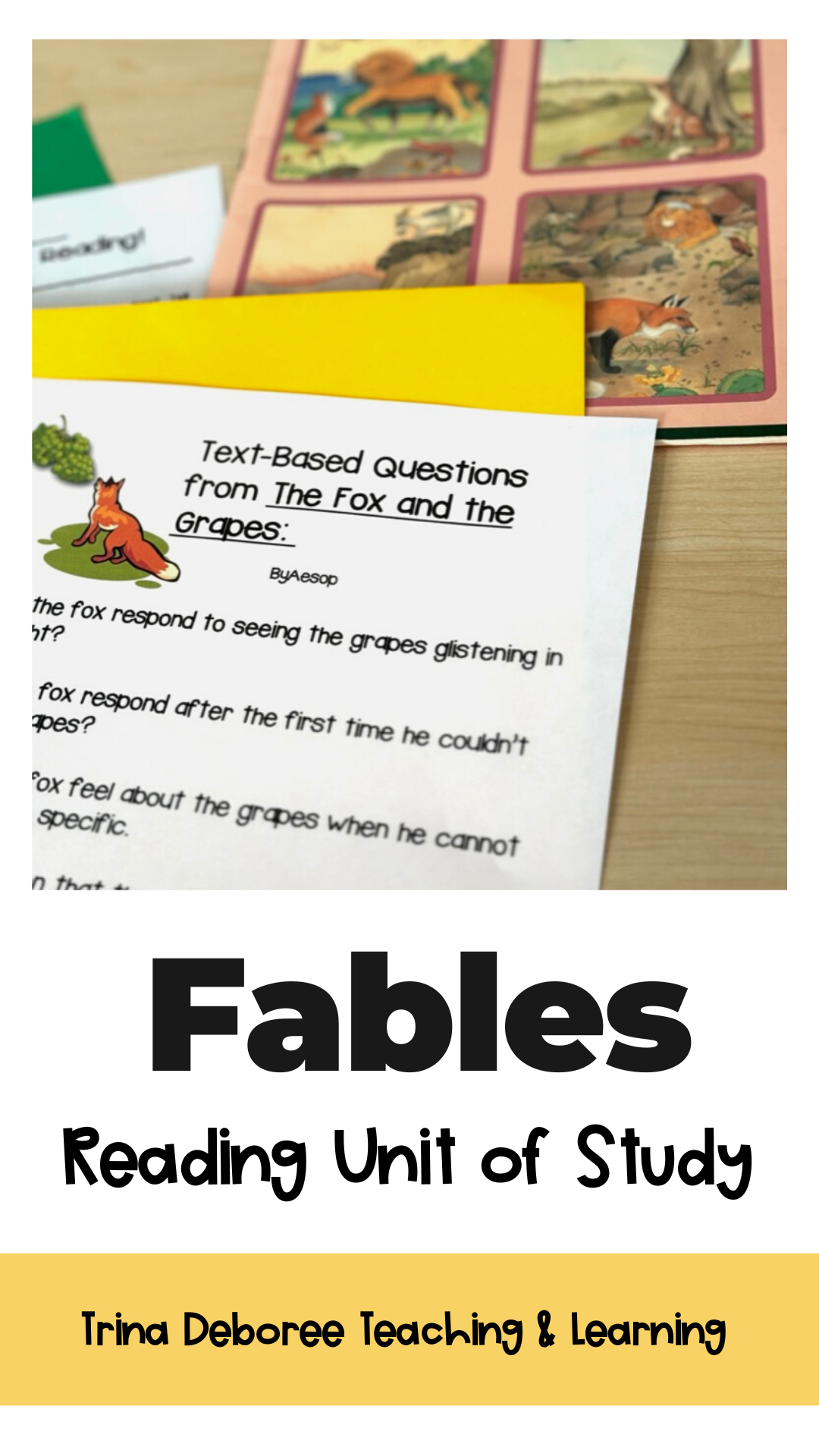Fairy Tales, Folktales, and Fables Reading Unit of Study
Exploring the Power of Traditional Stories
Traditional stories have an undeniable power to captivate and inspire, especially when it comes to a classic fairy tale that has stood the test of time. When introduced to second graders, these timeless tales open up a world of imagination and wonder, sparking their creativity and expanding their understanding of different cultures. The magic of storytelling lies in its ability to transport young minds into enchanting realms where heroes battle dragons, kind-hearted characters triumph over adversity, and lessons about resilience and empathy are seamlessly woven into the narrative.
Exploring traditional stories with second graders offers a unique opportunity to delve into the rich tapestry of human experience through the guise of fantastical adventures. These narratives entertain and convey profound messages that resonate with children on a deeper level. As educators and parents, we can harness the power of these stories to instill essential values and ignite a lifelong love for reading. By delving into classic tales from various cultures, children can better appreciate diversity while recognizing universal themes that bind us together as part of this wondrous human experience.
We all know that a good story can turn a classroom into a theatre of imagination, and who better to lead this performance than you, the conductors of young minds? This unit isn't just about reading words on a page. Oh no, it's about opening a treasure chest of adventures, morals, and lessons that linger long after the "happily ever after." So, grab your magic wands (a.k.a. markers) and your scrolls (uh, lesson plans and an anchor chart or two), and let's sprinkle some fairy dust on those teaching manuals. Your students are about to embark on a journey they - and you - will always remember!
Understanding the Differences
Embarking on the journey of exploring fairy tales, folktales, and fables in your second-grade classroom is like opening a treasure chest of storytelling. The first step is to understand the differences between the three genres.
Begin this adventure by presenting the essential questions: What are folktales, fairytales, and fables? How do they differ from each other? Use genre-specific books, explanatory websites, and interactive PowerPoints to create an engaging display for each genre. Then, dive into the activity by reviewing these questions, ensuring your students understand they're on a quest to answer them.
A KWL (Know, Want to Know, Learned) sheet becomes an interactive map for this journey. First, ask students to jot down what they already know about each genre on sticky notes and place these under the corresponding headings. This initial brainstorming can be an eye-opener – it's okay if some students start from scratch; assure them they're about to become genre experts!
Next, turn this into a collaborative mission. Encourage students to write down what they want to learn on sticky notes, then have them engage in the "Numbered Heads Together" Kagan cooperative learning strategy. This part of the lesson fuels their curiosity and fosters teamwork and communication. As each team shares their inquiries, add these sticky notes to the 'Want to Know' section of your KWL chart.
Now, it's time to unravel the mysteries of each genre. Whether you use the provided genre explanations, engaging PowerPoints, or your creative methods, ensure that each student understands the distinctive features of folktales, fairytales, and fables. After the presentation, have the students reflect on their learning and add new sticky notes to the 'Learned' section. As you review the chart, emphasize these genres' different structures and elements, aligning with the standards of analyzing and understanding text structures.
Finally, conclude this introductory session by revisiting the essential questions, allowing each student to articulate their newfound understanding of each genre. You're now ready to set sail into the enchanting world of these three genres, promising a journey filled with magical stories and learning opportunities!
Benefits of Studying Traditional Literature
There's something truly magical about delving into the world of traditional literature. Whether it's revisiting your favorite fairy tale from childhood by the Brothers Grimm or Hans Christian Andersen or discovering a new one, studying traditional literature offers an enchanting journey through timeless stories that have captured the hearts and imaginations of people for generations. Stories like Little Red Riding Hood or a classic fable like Three Billy Goats Gruff contain rich story elements, vivid main characters, and captivating plots. These story elements found in classic tales provide an escape from reality and valuable insights into human nature and societal values.
One of the most compelling benefits of studying traditional literature, like a Fairy Tale Unit, is the opportunity to explore universal themes that resonate across cultures and periods. From love and betrayal to courage and sacrifice, these stories offer enduring lessons that are as relevant today as they were centuries ago. By immersing ourselves in these timeless narratives with a look at different characters, we gain a deeper appreciation for the complexities of the human experience and a broader perspective on life. Introducing a variety of fairy tales allows students to experience different cultures, as well.
Plus, beautiful picture books are easy to find when searching for classic fairy tales or folktales. Fables are harder to find, but inside Fairy Tales, Folktales, and Fables, I have provided easy-to-find fables that can be found suitable online or at your local library.
Furthermore, studying traditional literature can inspire creativity and foster a profound love for storytelling. Engaging with classic tales allows us to appreciate the artistry behind crafting compelling narratives while igniting our own imagination. As we analyze these stories, we gain insights into effective storytelling techniques and better understand how to weave together plot character development, and thematic elements to create impactful narratives and offer extension activities that deepen comprehension skills.
Diving into traditional literature opens up a world of wonder where we can explore timeless themes, glean valuable insights about human nature, and nurture our creativity through engaging with captivating storytelling. These classic tales continue to enchant young and old readers by providing entertainment and profound wisdom that transcends time.
How to Implement a Reading Unit
Are you ready to dive into the exciting world of implementing a reading unit? One fresh approach is to select books that use vivid vocabulary words, helping students expand their language skills and comprehension. Students are likelier to engage and connect with the material by selecting familiar stories with compelling narratives. A key strategy is carefully curating the book selection to ensure it aligns with the curriculum and your student's interests.
Another way to captivate your readers is by incorporating interactive activities that bring vocabulary words to life. You can create word walls, play word games, or even organize dramatic readings using the new vocabulary words. This deepens students' understanding of the words and makes learning fun and memorable. Finally, consider leveraging technology by using digital resources and multimedia tools to enhance the reading experience for your students. By embracing these innovative methods, you can ensure that your reading unit inspires a love for literature while engagingly nurturing essential language skills!
After spending a few days comparing and contrasting the three genres, I like to jump into each genre separately. I usually start with folktales or tall tales. Folktales are stories passed down from generation to generation and often shared orally. Folktales take on the characteristics of the time and place they were told. Folktales also represent universal themes and help to make sense of the world we live in. This genre is often lesser known to young learners, but they quickly come to love folktales because they are so fun! Looking at different versions of folktales can cover comparing and contrasting standards and give children a sense of how the story elements change with the story's background.
I love to start with Stone Soup and an essential question or three. Reviewing the team-building genre activity you covered at the start of the unit will allow students to use some background information about folktales. Here are some sample essential questions to use when teaching folktales.
After spending a week or so on folktales, I move on to my favorite part of this unit- the fairy-tale unit! Here, I focus on different versions of original fairy tales like Cinderella and Little Red Riding Hood. Some fun alternative fairy tales like Seriously, Cinderella is So Annoying! and Honestly, Red Riding Hood Was Rotten! by Trisha Speed Shaskan are also great ways to engage kids in literature. These alternatives to the original version are perfect for focusing on point of view.
Once we have spent several weeks in fairy tales, we move on to fables. This is another favorite unit as there are so many forms of fables, and the lessons are fun for students to discover.
Assessing Student Learning
Assessing student learning takes on new dimensions when incorporating graphic organizers to evaluate comprehension and critical thinking. These tools allow students to visually represent their understanding and give educators an insightful glimpse into their point of view. By analyzing the connections made within the graphic organizers, teachers can better understand students' thought processes and identify potential areas for further exploration.
Here are some sample graphic organizers used in Fairy Tales, Folktales, and Fables.
Furthermore, leveraging small groups and assessments for small groups can uncover diverse perspectives among students and enhance collaborative learning experiences. Encouraging discussions within these groups allows for rich exchanges of ideas and exposes alternative viewpoints that may not have surfaced in traditional assessment settings. This approach sparks enthusiasm for interactive evaluations and brings meaningful dialogues that transcend individual understandings, ultimately enriching the learning environment. With a focus on graphic organizers and small group dynamics in assessment, educators have the exciting opportunity to uncover fresh insights into student learning, paving the way for more impactful teaching strategies.
Many literature standards can be taught and assessed throughout this unit. Here is a list of standards covered inside the entire unit of Fairy Tales, Folktales, and Fables:
Asking and Answering Questions in a Story.
Central Theme
How Characters Respond to Events and Story Elements
Vocabulary
Story Structure
Point of View
Illustrations Help Make Meaning
Compare and Contrast
Supplementary Information
Fairy Tales 2nd Grade Fairytales, Folktales, & Fables Unit Lessons & Activities
Interactive Read Aloud Lesson Plans: Close Reading & Read Aloud Comprehension
Let's Celebrate Reading
In conclusion, the Fairy Tales, Folktales, and Fables Reading Unit of Study have provided an excellent opportunity for students to explore the rich world of storytelling. The celebrated reading party culminates their learning journey, immersing them in the characters and worlds they have encountered. Students can embody the magic and wonder of these timeless tales by dressing up as characters from all three genres.














